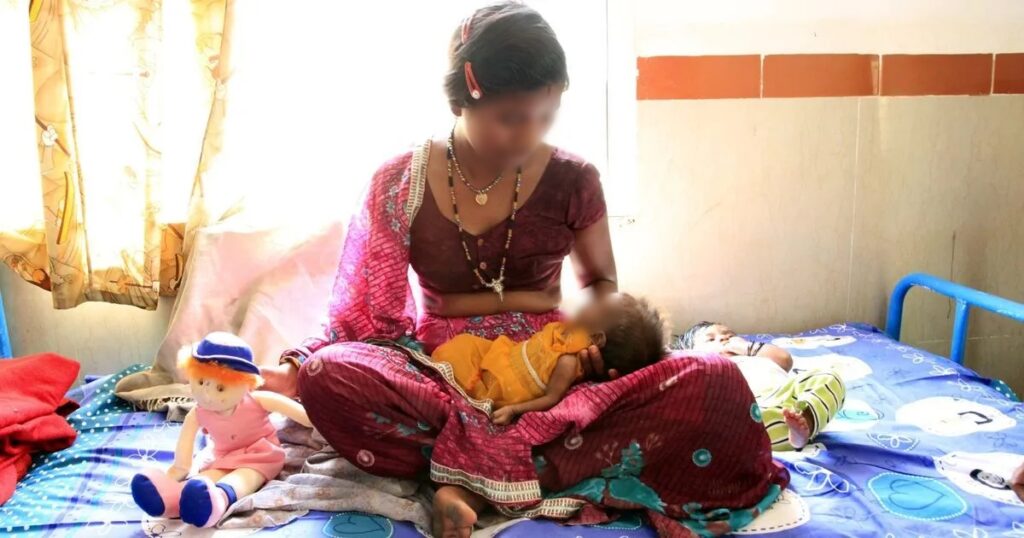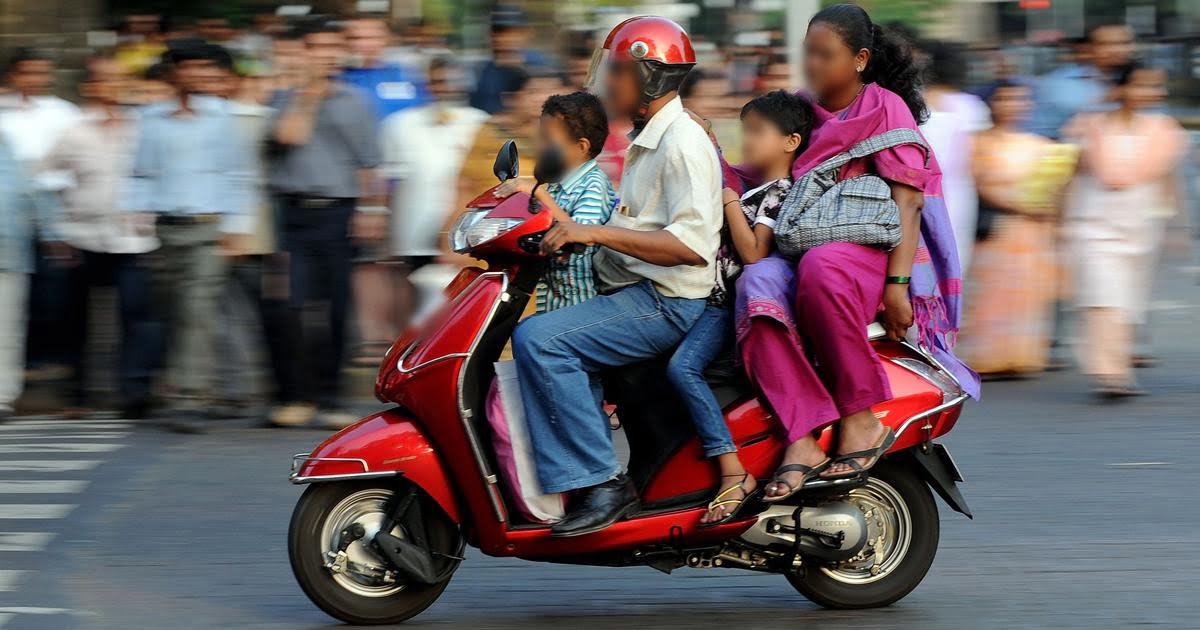On World Population Day this year, Ajay Bisht, Bharatiya Janata Party member and chief minister of Uttar Pradesh, proposed the Uttar Pradesh Population (Control, Stabilisation and Welfare) Bill, 2021-2030. Some of the prominent goals proposed in the bill are: increased accessibility to safe and proper abortions and contraceptive measures; reduced maternal and infant mortality rates and better access and management of health, education and nutrition of adolescents of the age group 11-19.
The first draft of the bill released on July 9 also proposes reinforcement strategies and incentives for government employees following the two-child policy: paternity leave of 12 months with salary and allowances, out of turn promotions, several rebates and subsidies while purchasing land and housing, 3 percent increase in Employee Provident Fund, etc. Those following the two-child policy but not employed in the government service would also be reinforced with several rebates and subsidies in bills and tax payments. The bill also proposes to put in place de-incentivisation mechanisms: Those with more than two children will not be allowed to apply for government services, seek government subsidies and promotions in government employment.
Also read: Population Control And Its Prejudices Against Marginalised Bodies
While the punishment-based discrediting system proposed in the bill is itself flawed, in a state such as Uttar Pradesh, wherein polarising extremist narratives such as “growing Muslim population” and “Hindu khatre mei hain” are peddled by none other than the incumbent government itself, the UP chief minister’s aim at creating a “population balance” between different communities could further deepen the strong communal hatred towards the Muslim population and affect the socio-economic development of the latter.
in a state such as Uttar Pradesh, where polarising extremist narratives such as “growing Muslim population” and “Hindu khatre mei hain” are peddled by none other than the incumbent government itself, the UP chief minister’s aim at creating a “population balance” between different communities could further deepen the strong communal hatred towards the Muslim population and affect the socio-economic development of the latter.
Additionally, sterilisation drives and population regulation policies have always interfered with the reproductive autonomy of women and could exacerbate gendered effects such as: female foeticide, under-the-table pre-determination of sex and unsafe and illegal abortions, to name a few.
It is also important to emphasise upon how a bill such as this would also naturally lead to the penalisation of the historically oppressed caste communities, most of whom continue to be unable to come out of the vicious cycles of poverty and for whom, more children would mean more hands to work. What would an outright denial of access to subsidies, restrictions on getting into the government services would mean for such a family if not a pushback to continue to live in abject poverty?
The rampant rise in hate crimes against Muslims in India, especially in states such as Uttar Pradesh, have been hand-in-hand with the narrative of ‘Hindu khatre mei hain’ or ‘Hindus are in danger’. The narrative, which has been used liberally by the ruling party at the Centre, has embedded a fear narrative of the other, in this case, the virile Muslims, taking over the country and turning the Hindu population into a minority. Vijaykant Chauhan, a vigilante working to prevent inter-religious marriages in Uttar Pradesh reportedly told The Wire that Muslims in India are part of an “international ploy” to turn the Hindu population into minorities.

Also read: 5 Myths About Population Control In India That Need To Be Busted
The report goes on to quote from an article by Nayantara Sheoran Appleton, lecturer at Victoria University of Wellington’s Centre for Science in Society which states thus:
“… the idea of a ‘population explosion’ lends credence to the country’s already surging anti-Muslim sentiment. This in turn has been erected on false concerns that the population of Muslims in India is quickly outpacing those of Hindus, fanned by communal statements by prominent political leaders. However, the TFR among Muslims is falling rapidly, faster than it is among Hindus.”
District level estimates of Census 2011 indicate what Appleton has said: TFR or the replacement level of fertility among Hindus in 2001 and 2011 were 4.1 and 2.6, with an absolute decline of 1.5. Whereas the TFR among Muslims in 2001 and 2011 were 4.8 and 2.9 respectively, with an absolute decline of 1.9.
Not to mention how the projection of the ‘virile Muslim other’ also has led to the juxtaposition of the Hindu hypermasculine man whose aim is to emasculate the Muslim other. The results are for us to see: from the recent case of Sulli Deals to the rapes of Muslim women in communal crimes to ‘mock’ the masculinity of Muslim men, Muslim women’s bodies are the sites wherein the implications of polarised fascist narratives unfold. The Madhya Pradesh government’s anti-conversion bill targetting ‘love jihad’ is a curb on the freedom of choice of several Hindu women who want to be with their Muslim partners.
A ground report by Neha Dixit titled ‘A Most Callous Cut’ refers to “Population Control in India: Prologue to the Emergency Period” a paper by Matthew Connelly, Columbia University professor in Global History that states how the Congress’ National Planning Committee in the pre-independence era issued a report that recommended birth control campaigns for Muslims, tribal population and lower caste Hindus while removing socio-political barriers to inter-caste marriages among upper caste Hindus to maximise upper caste Hindu reproduction. Dixit notes that the aim was to “prevent the deterioration of the racial makeup”, even though the report did not lead to formally materialised implementation.
Dixit’s report also makes note of how when the US President Lyndon B Johnson mobilised for birth control, the people who became the key demographic of the drive were mostly blacks living in impoverished socio-economic living conditions.

Even though India adopted a National Population Policy and a target-free approach in 1996 that focused on the reproductive, contraceptive and health needs of young people, according to a report by the Centre for Health and Social Justice, an upper-caste landlord took five labourers from the Dalit community working on his land and got them sterilised under false pretexts. This incident took place in Uttar Pradesh’s Lakhimpur Kheri district in 2002, during which the state government had offered gun licences in exchange of five cases, in order to promote family planning.
Even though India adopted a National Population Policy and a target-free approach in 1996 that focused on the reproductive, contraceptive and health needs of young people, according to a report by the Centre for Health and Social Justice, an upper-caste landlord took five labourers from the Dalit community working on his land and got them sterilised under false pretexts.
Evidently, a narrow and targetted approach continues to be rampant and more often than not, the marginalised sections are the ones to bear the brunt of it. Data indicates how family planning approaches taken on at several junctures in India’s history has focused on female sterilisation while undermining the lack of access to contraceptives that women from marginalised and persecuted communities such as Dalit, Adivasi, Bahujan and Muslim face.
The double and triple levels of oppression that women belonging to marginalised sections of community face indicate that if a population control bill is brought to practice in a state like Uttar Pradesh, cases of illegal and under-the-table abortions, girl drop-outs from school, mother and infant malnutrition, female foeticide and targetted harassment of certain communities etc., would only increase. A report by The Wire noted how economists Abhishek Chakravarty and S. Anukriti in their paper published in 2017 ‘Democracy and Demography: Societal Effects of Fertility Limits on Local Leaders’, observe how implementation of population control measures would only affect the sex ratio at birth for the worse.
In 2019, we came across reports of how over 13,000 women sugarcane farm labourers in Maharashtra’s Beed were forced to undergo hysterectomies so they do not take leave from work. A Thomson Reuters investigation in the same year found that about 100 women in a Chennai garment industry were given unlabelled drugs to make them work through their period pain, which led to many of them developing health complications. Clearly, women in the informal sector, mostly belonging to oppressed caste communities, are denied reproductive autonomy and bodily integrity. Similarly, any approach towards controlling population growth always focuses on female sterilisation. According to the National Family Health Survey estimates, during 2014-15, out of the four million sterilisations, only one lakh were performed on men.
Instead, a population regulation policy that emphasises on equity of access to contraceptives, a robust healthcare system, reservations and socio-economic development and alleviation strategies such as equitable access to nutrition, education, safe drinking water etc., would go a long way in regulating the population.
Uttar Pradesh chief minister Ajay Bisht’s population control bill must be critically analysed in the context of how the state is the hotbed of crimes against minorities, Muslims and women. A state-mandated implementation of the bill that does not just incentivise but also penalises those who do not adhere to the norm could only lead to further marginalisation of the marginalised. Among those who have criticised the bill and its ramifications, Bahujan Samaj Party chief Mayawati has also observed how this is an election tactic of the Yogi Adityanath government that, after being in power for about four years, have suddenly woken up to the effects of overpopulation, with the Legislative Assembly elections scheduled to be held in February 2022.
Featured image source: Scroll.in
About the author(s)
Soumya is a Masters graduate in gender from Jamia Millia Islamia & has a PG Diploma in New Media from Asian College Of Journalism. She is learning to unlearn and question patriarchal structures with empathy. She has taken an interest in gardening but has over-watered and killed two plants already. This may or may not be a metaphorical reference to how she deals with life.




